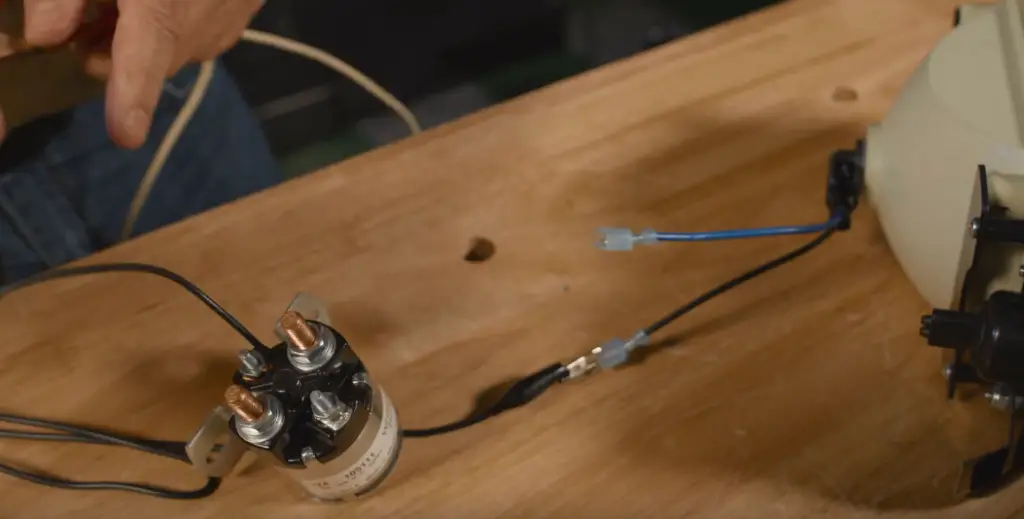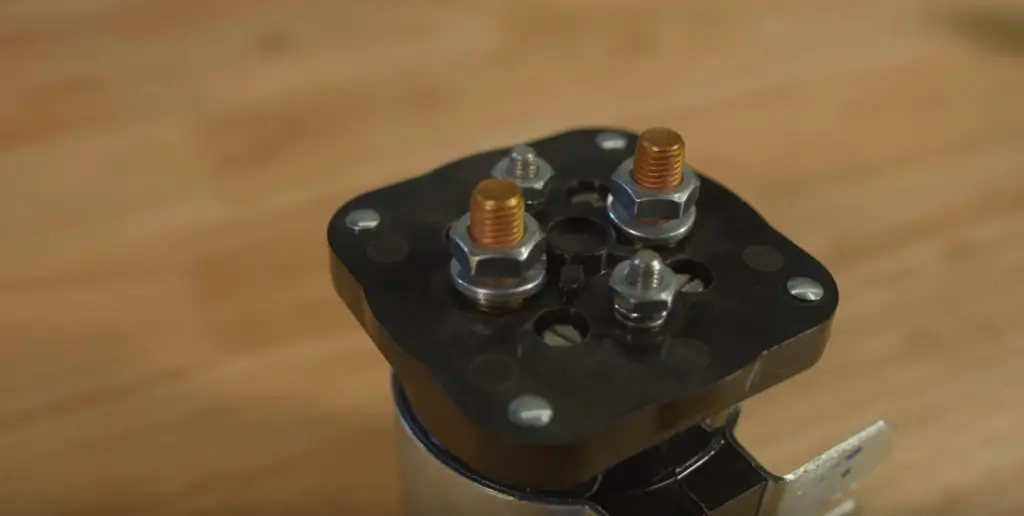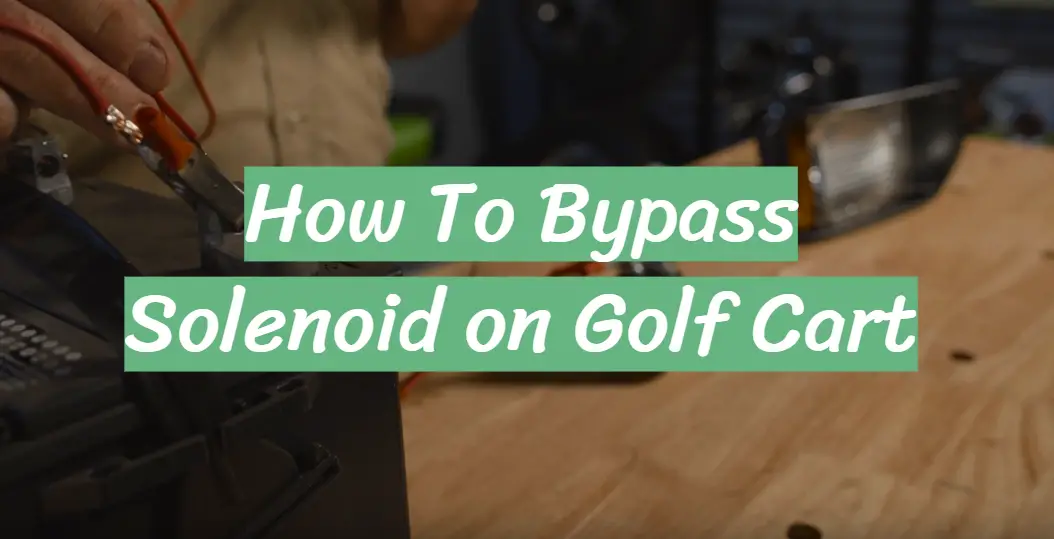So you decided to buy a new solenoid for your golf cart. To make it operate properly and safely, follow the basic rules for picking and using this product. Bypassing solenoid may save you from troubles with starting. Because a bad solenoid can cause many problems even on the best and newest golf carts.
Table of Contents
Solenoid – why do golf players use it?
Before explaining what are symptoms of a bad solenoid on a golf cart, let’s clarify its definition and purpose for golf players.

Being an essential part of the golf cart’s functionality, a solenoid serves as the major switch for directing the batter’s current to the generator, starter or traction motor. A solenoid is important, that is why when it gets broken, serious problems must be expected. Especially, if you use a battery-powered golf cart, a bad solenoid break downs frequently.
How does solenoid work? It is in use every time you push the pedal of your golf cart. It stops or starts working at the same moment you stop or start the cart. If you use a cart frequently, expect many solenoid-related issues.
What are the symptoms of a bad solenoid on a golf cart?
There are a few signs that a golf cart has problems because of a bad solenoid. You may have even one of these signs detected to become worried. Don’t ignore the following symptoms of a bad solenoid! Ignoring these issues will only make them worse and worse. For instance, a bad solenoid may result in buying a new starter.

You ought to check the cart for a bad solenoid if you notice such signs:
- The cart doesn’t start. It is the most obvious symptom;
- In some models the starter’s power never cease and thus can destroy the starter itself, as well as the flywheel or wiring;
- Sometimes when you jump golf cart solenoid (hit the start), the solenoid clicks but nothing comes from it. The reason is the burned contacts or contacts not connecting. Not enough voltage is also a common reason due to a low battery;
These are the major symptoms of a bad solenoid on a golf cart.
How to check solenoid if you own a gas golf cart?
If you suspect the symptoms of the bad solenoid on a gas golf cart, the major problem is usually related to the failure of large contacts. The starter may continue working, even with the ignition turned off. Make sure to check the spring – it shouldn’t be worn down, to pull the pinion back to the neutral position. Otherwise, the starter may not disengage and work all the time.

If you start hearing small and repeating clicks, when you turn on the cart, then your cart won’t go.
How to check solenoid if you own an electric golf cart?
There are certain symptoms of the bad solenoid on an electric golf cart. The lack of any clicking noise when starting the cart’s ignition. The clicks must be heard each time when you switch on and off the ignition. If you don’t hear any clicks, then the solenoid may no longer send electric power to the golf cart.
Otherwise, you may have problems with the overheated contacts. Make sure to check them with an expert.
A step-by-step guide to check a golf cart for a bad solenoid
GolfProfy.com is a website where I post articles for golf players. Every review is supported not just by experience but also includes the tips and opinions of my friends who specialize in golf equipment or techniques. For instance, my friend who is a golf cart technician for a few years wrote this instruction for checking a bad solenoid:
1. A standard solenoid has four posts – terminals (two large and two small ones). The battery voltage is connected to 2 small terminals. They activate the solenoid that is a switch for 2 large terminals working together. Sometimes 2 large terminals fail to work, causing a malfunction due to a bad solenoid. There is a place where you need to start checking a solenoid.
2. You should apply a few cheap tools for testing a bad solenoid on a golf cart. The first instrument is a voltmeter. Another one is a wrench (1/2 inch tool is the best choice). To apply these tools you should do the following things:
- Make sure a golf cart is off and neutral;
- Unplug all cables from two major solenoid’s terminals, wrapping up the connections with the tape;
- Turn on the voltmeter to Ohms reading. Connect every probe to every large terminal. The initial zero must be 0;
- Then carefully move the golf cart’s switch to forward. Turn the cart on. Accelerate very slowly. The working solenoid should click;
- Check the voltmeter for reading. If the reading is between 0-0.4 ohms, it means you have a good solenoid. Otherwise, you have a bad solenoid on a golf cart;
3. But the above-mentioned steps will work only if you initially hear clicks coming from the cart’s solenoid. If you don’t hear them, make sure to grab the voltmeter and set it to DC volts (on the scale of 200). Place a probe on every small terminal of the solenoid.
4. Then turn on the cart with the key and position it in forward. Step on the cart’s accelerator. If the voltmeter demonstrates the full battery voltage, without any click, probably the coil inside the solenoid is broken and you ought to replace it. If the voltmeter is 0, look for a problem in the cart, the solenoid is fine.

Important notice: buy a new solenoid that is fully compatible with the golf cart’s voltage. You are to opt for the solenoid with a 36-volt and 48-volt option. Usually, the voltage is written on the side of a solenoid. Check the old solenoid’s voltage if you have doubts.
The simplest way to bypass solenoid on a golf cart
If you don’t have a voltmeter and you don’t intend to invest in it, there is another way how to bypass solenoid on a golf cart. Just attempt connecting two large wires of terminals of the solenoid. Then attempt to operate the cart. If it doesn’t work, the solenoid is not your problem. Test the entire ignition system.
Stay safe when checking a bad solenoid on a golf cart:
- Before starting the test of a solenoid, please, raise the cart’s rear wheels off the ground with the proper support;
- Make sure you have a full fire extinguisher. Prevent the fire on your golf cart;
- Avoid high voltage cars that may occur by accidentally shorting out the wiring connections with different metal objects – my friend severely burnt his hand;
- Always do solenoid testing and in a well-ventilated area. Be very careful and cautious when you deal with batteries and hydrogen gas. Any spark or flame can ignite this gas;
- Wear gloves and goggles when working with battery acid;
Final thoughts
Remember that solenoid is one of the cheapest parts for replacement. Though, without checking and replacing it you risk having a malfunctioning or completely broken golf cart. Make sure to consult experts on how to bypass solenoid on a golf cart before trying it on your own.







Leave a Reply